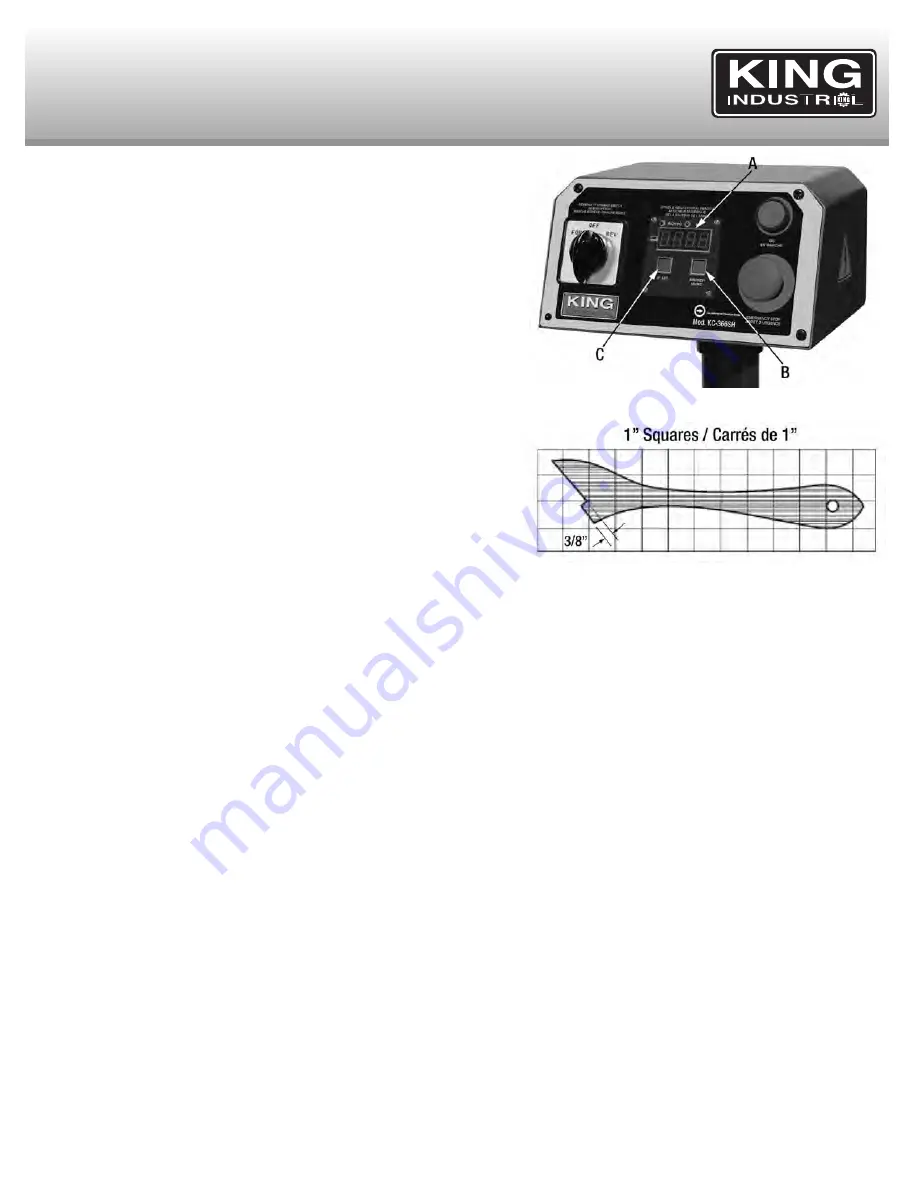
ADJUSTMENTS & OPERATION
Control box
This Industrial Shaper is equipped with a control box provided with ON/OFF
push buttons, a FWD/REV switch and a Spindle Height Digital Readout. See
Fig.21.
WARNING:
Make sure that your workplace is inaccessible to children by
closing and locking all entrances when you are away. NEVER allow untrained
visitors in workplace when assembling, adjusting or operating equipment.
Digital Readout
The digital readout (A) Fig.21 is used for making incremental spindle height
adjustments where applicable, if multiple shaping/cutting passes are to be
performed on a given workpiece. Set the digital readout as follows:
1. Set the desired spindle height for the workpiece to be cut.
2. Supply power to the machine so the digital readout display is lit.
3. Select inch or mm by pressing the inch/mm button (B).
4. Press the “0” SET button (C) for approximately two seconds.
The digital readout display resets to zero, which is your reference point. When
the spindle is raised or lowered (front handwheel), the change is relative to this
reference. If this feature is used, the display should be reset to zero for each
new cutting operation.
Operational guidelines
Before connecting power to the machine, check that all mounting screws and bolts are tight. Turn on the motor momentarily to check for
proper rotation. The spindle should rotate counterclockwise when looking down on the spindle. Correct as required. Run the machine for a
short period of time to ensure that the moving parts are working properly with no excessive vibration. If a problem develops, correct it before
operating shaper.
Safety Devices
Safety devices such as guards, fixtures, templates hold-downs, push sticks, featherboards and power feeders should be used whenever
possible. Fig.22 shows a push stick illustration which can be easily made from scrap wood.
Note:
For the sake of clarity, the shaper guard has been omitted from most illustrations. All shaper operations must be done with the proper
guard in place and any other device which insures the safety of the operator.
Grain Direction Considerations
Plan to shape the workpiece in the same direction as the grain when possible. Some open grain woods (such as redwood, fir and oak) will
leave a rough, or slightly splintered edge when cut against the grain.
Warning:
Deep cuts require excessive horsepower and pushing force to control the cut.
Deep cuts can also cause the wood to splinter or split and may lead to lost control or personal injury. When an edge finish is unsatisfactory,
take two or more cuts with the final cut no more than 1/16” deep. In the case of shaping across the grain, the trailing board edge will often
splinter. To correct this, the best solution is to make the board 1/4” oversize in width, shape the board, and simply trim off the excess.
FIGURE 21
FIGURE 22
ADJUSTMENTS & OPERATION



















